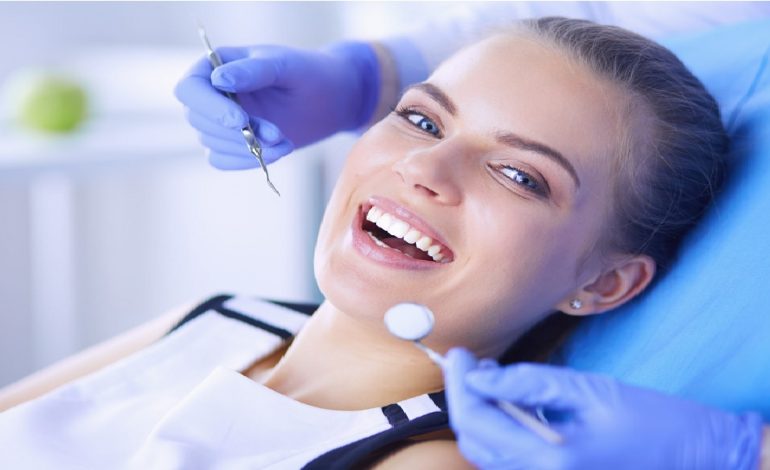
Digital Dentistry: A Revolution in Cosmetic Procedures
The advent of digital technology in cosmetic dentistry is nothing short of revolutionary. Digital Smile Design (DSD) is at the helm of this transformation, offering a digital simulation of potential outcomes of various cosmetic procedures. This technology allows dentists and patients to preview the results of treatments like veneers, crowns, and orthodontics before any physical work is done. The precision and predictability offered by DSD have significantly increased patient satisfaction and confidence in cosmetic dental procedures.
Moreover, the integration of CAD/CAM (Computer-Aided Design and Computer-Aided Manufacturing) systems in cosmetic dentistry has streamlined the fabrication of dental restorations. These systems enable the creation of highly accurate and customized dental prosthetics, such as crowns and veneers, in a fraction of the time traditionally required. The result is not only a more efficient and less invasive treatment process but also restorations that are remarkably lifelike and durable.
Minimally Invasive Techniques: The Rise of a Gentle Approach
The future of cosmetic dentistry is also characterized by a shift towards minimally invasive treatments. Techniques such as dental bonding, which involves the application of a tooth-colored resin to repair and improve the appearance of teeth, are becoming increasingly popular. This approach not only preserves more of the natural tooth structure but also reduces the need for extensive preparation and anesthesia, making cosmetic dentistry more accessible and less daunting for patients.
As dentists from https://marylebonesmileclinic.co.uk/ tell us, the use of clear aligners for orthodontic treatment represents a significant advancement in cosmetic dentistry. Unlike traditional braces, clear aligners are virtually invisible and can be removed for eating and cleaning. This innovation has made orthodontic treatment more appealing to adults, offering a discreet and comfortable way to achieve a straighter smile.
Biocompatible Materials: A Focus on Health and Sustainability
As patients become more health-conscious and environmentally aware, the demand for biocompatible and sustainable materials in cosmetic dentistry is growing. Materials such as ceramic and composite resins are favored over traditional metals for their aesthetic appeal and compatibility with the body. These materials not only mimic the natural appearance of teeth but also minimize the risk of allergic reactions and adverse health effects.
Furthermore, the development of bioactive dental materials represents a significant leap forward in cosmetic dentistry. These materials not only restore the appearance of teeth but also promote healing and regeneration of tooth structure. The use of bioactive materials in procedures like fillings and crowns is paving the way for treatments that not only improve aesthetics but also enhance the overall health of the mouth.
Laser Dentistry: Precision and Comfort in Cosmetic Procedures
Laser technology is another innovation transforming the landscape of cosmetic dentistry. Lasers are used for a variety of cosmetic procedures, including teeth whitening, gum contouring, and the removal of decay. The precision of laser treatment allows for more conservative procedures, preserving more of the healthy tooth and gum tissue. Moreover, laser treatments often require less anesthesia and result in less postoperative discomfort and faster healing times, improving the patient experience.
Enhancing Patient Experience: Beyond the Chair
The future of cosmetic dentistry places a strong emphasis on the patient experience, extending well beyond the dental chair. Advanced diagnostic tools and virtual reality (VR) are beginning to play a significant role in patient consultations and treatment planning. VR, for instance, can immerse patients in a 3D environment where they can visualize their treatment outcomes in real-time, significantly enhancing decision-making confidence and satisfaction. This interactive approach not only demystifies dental procedures but also fosters a more collaborative patient-dentist relationship.
Additionally, mobile apps and online platforms are revolutionizing the way patients receive post-treatment care and guidance. These digital tools offer personalized tips for dental care, reminders for follow-up appointments, and direct communication lines to dental professionals. Such innovations not only enhance the convenience and effectiveness of cosmetic dental treatments but also empower patients to take an active role in their dental health journey.
Artificial Intelligence: The Next Frontier in Cosmetic Dentistry
Artificial intelligence is poised to become a cornerstone of cosmetic dentistry, offering unprecedented precision and personalization in dental care. AI algorithms can analyze dental images and patient data to predict treatment outcomes, recommend personalized treatment plans, and even identify potential complications before they arise. This level of predictive analytics can significantly improve treatment effectiveness and patient satisfaction.
Moreover, AI-driven robots are beginning to assist in dental surgeries, offering enhanced precision in procedures such as implant placement. While the idea of robot-assisted surgery may seem futuristic, these technologies are rapidly becoming a reality, promising to reduce human error and improve clinical outcomes.
Ethical Considerations: Balancing Innovation with Responsibility
As cosmetic dentistry advances, it must navigate a complex landscape of ethical considerations. The pursuit of aesthetic perfection raises questions about body image, self-esteem, and the societal pressures that drive demand for cosmetic procedures. Dental professionals face the challenge of ensuring that treatments are motivated by genuine need and potential for improved well-being, rather than societal or media-driven standards of beauty.
Furthermore, the accessibility of advanced cosmetic dental treatments poses another ethical dilemma. As these procedures often come at a high cost, there’s a risk of creating a divide between those who can afford them and those who cannot. The dental community is thus tasked with exploring ways to make advanced cosmetic treatments more accessible, ensuring equity in dental care.
Conclusion
The future of cosmetic dentistry is undeniably exciting, marked by rapid technological advancements that promise to revolutionize patient care and treatment outcomes. From digital dentistry and minimally invasive techniques to the integration of AI and a focus on ethical practice, these innovations are set to transform the way we think about and experience cosmetic dental care.
As we look ahead, it’s clear that the field of cosmetic dentistry is not just about creating beautiful smiles. It’s about advancing a holistic approach to dental care that values patient experience, embraces technological innovation, and upholds the highest ethical standards. For anyone in the UK interested in the future of cosmetic dentistry, the message is clear: the future is bright, and it’s here to redefine what’s possible in dental care.
Sources: Marylebone Smile Clinic – 66 Harley St, London, W1G 7HD – 02071268526




